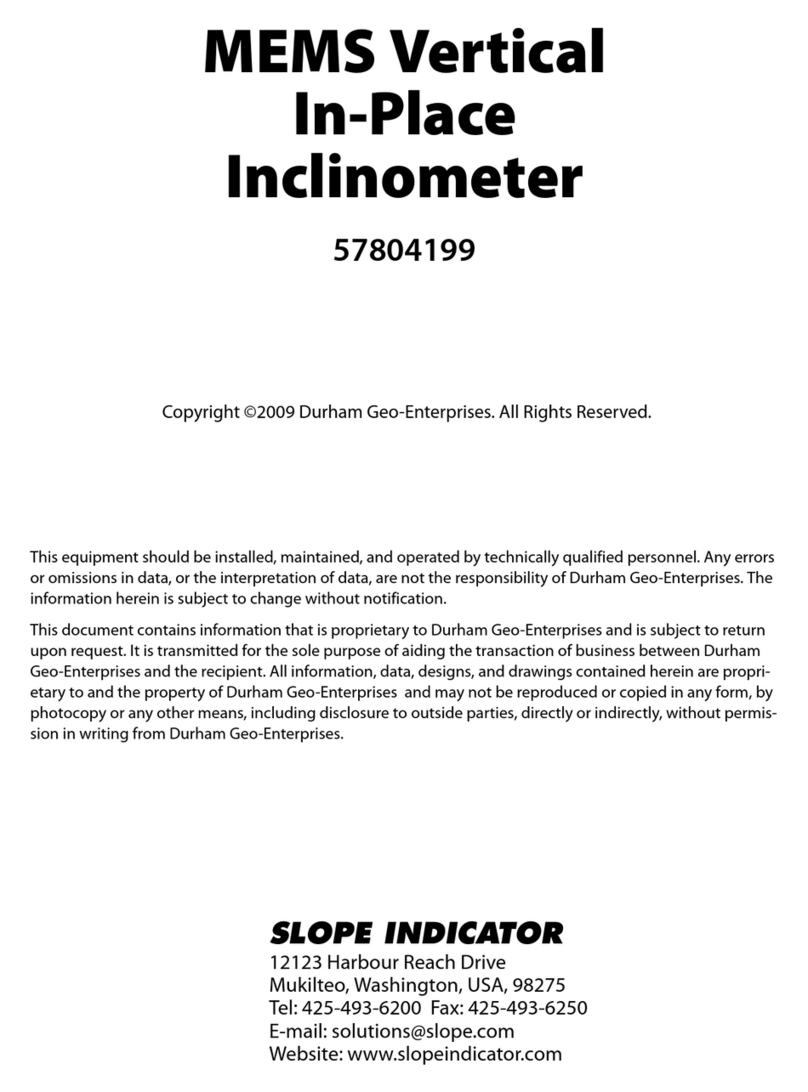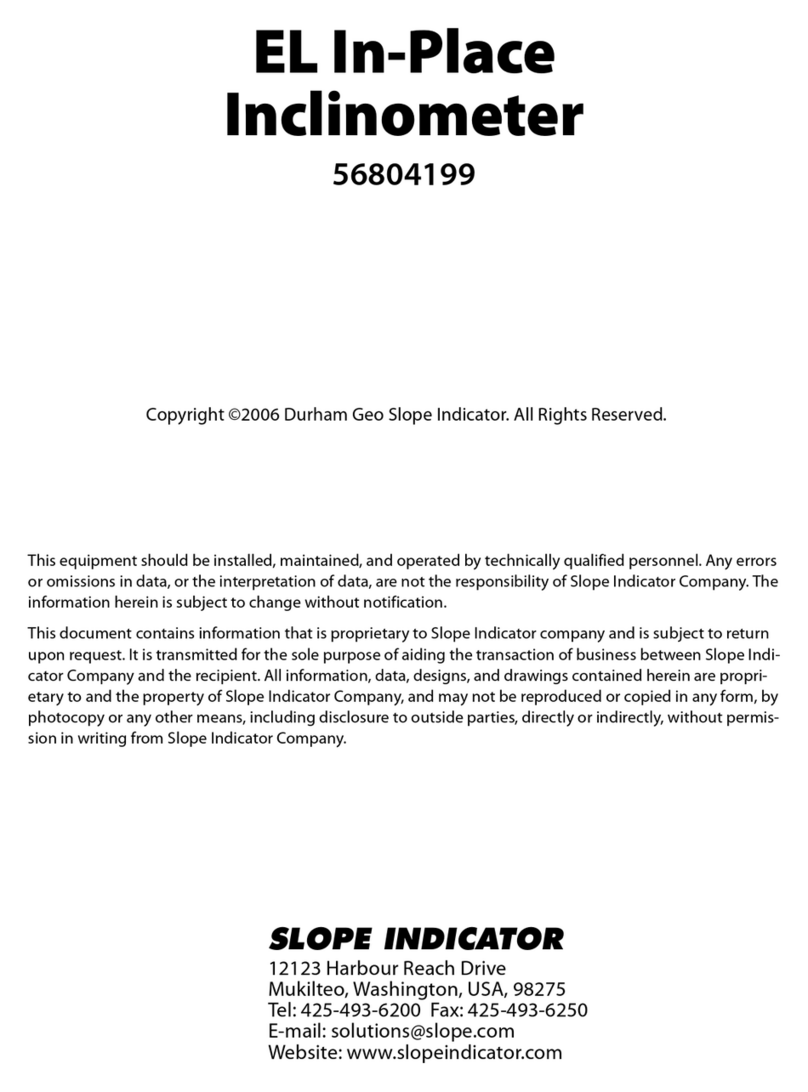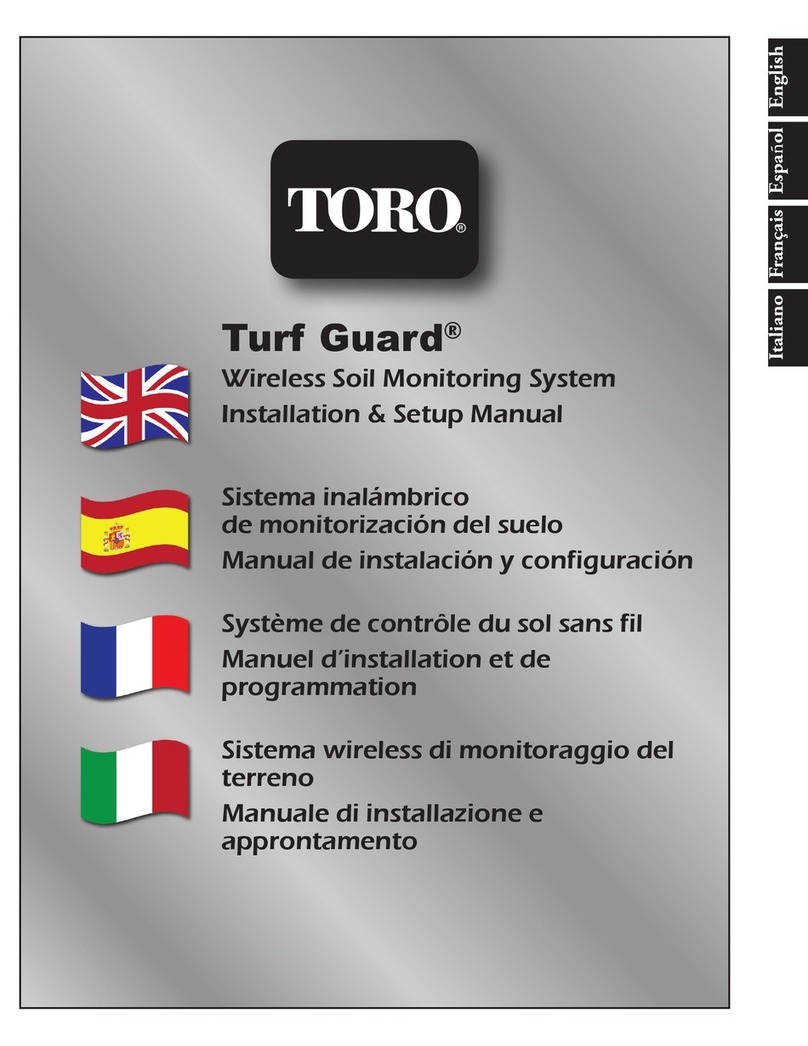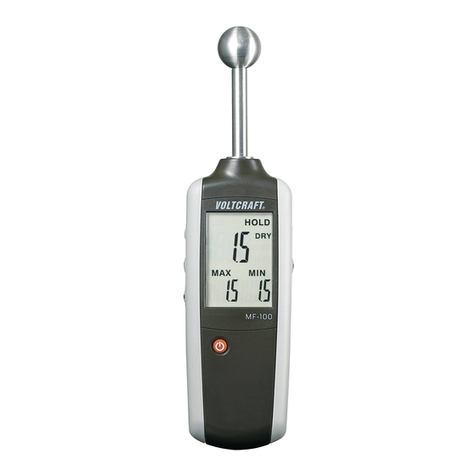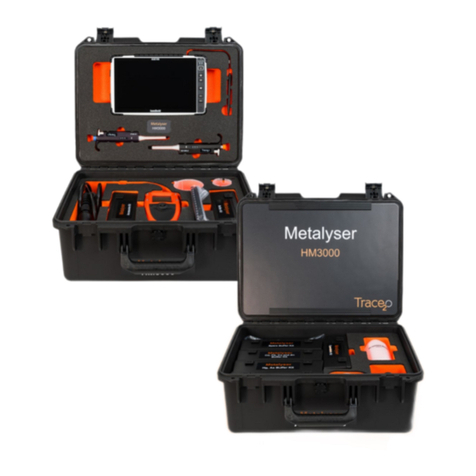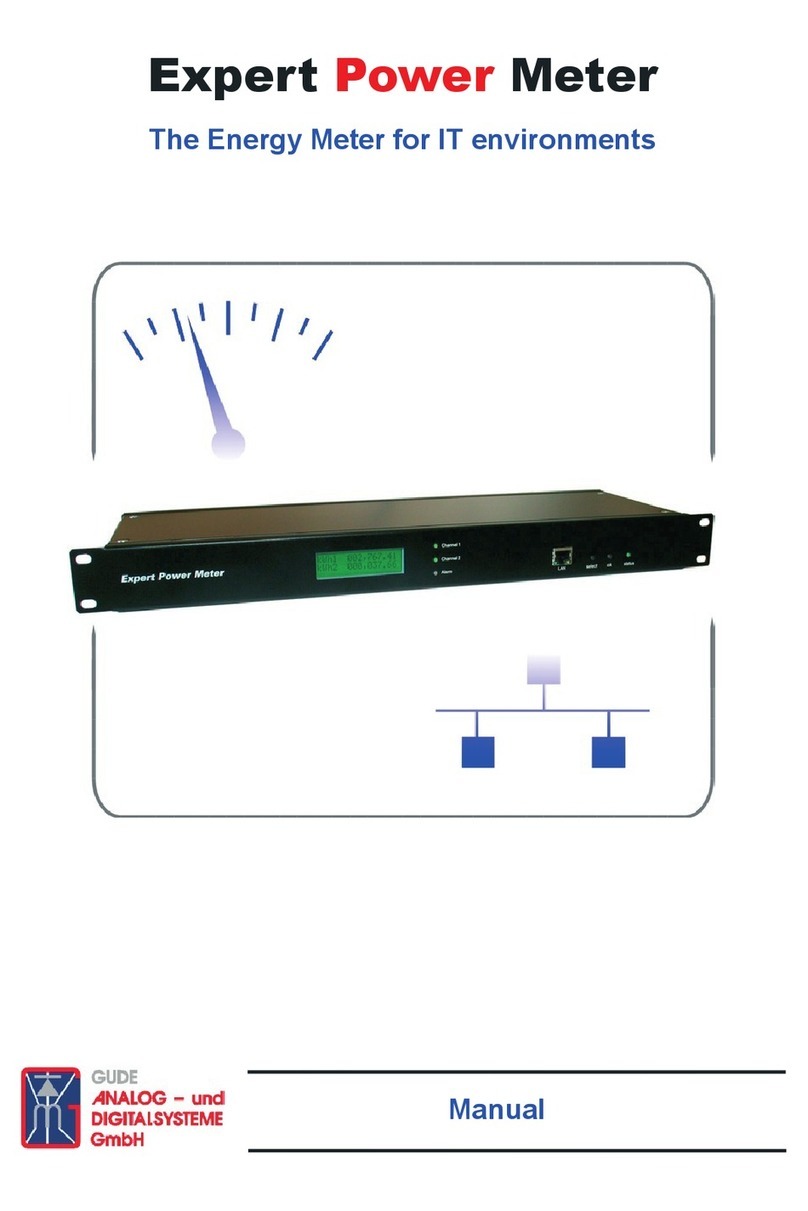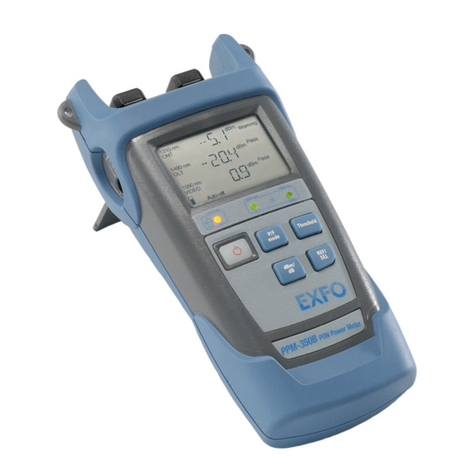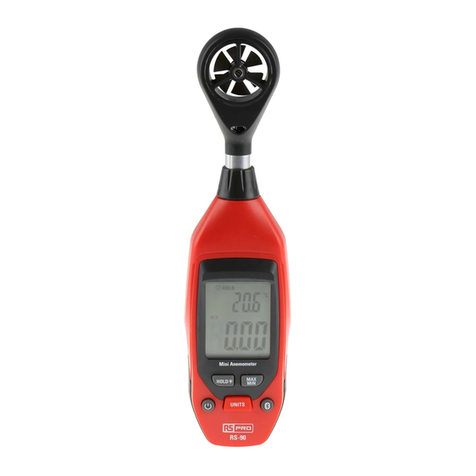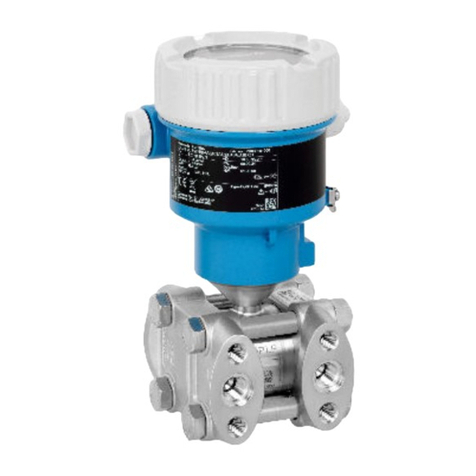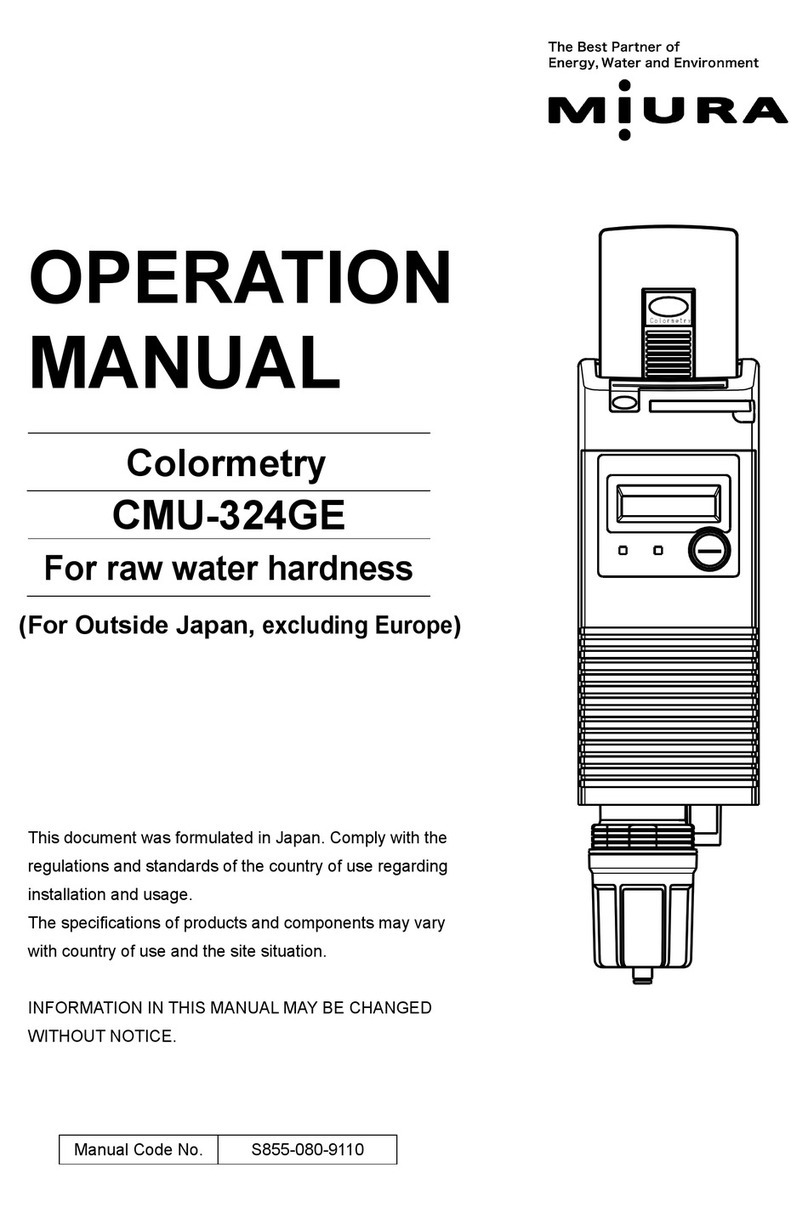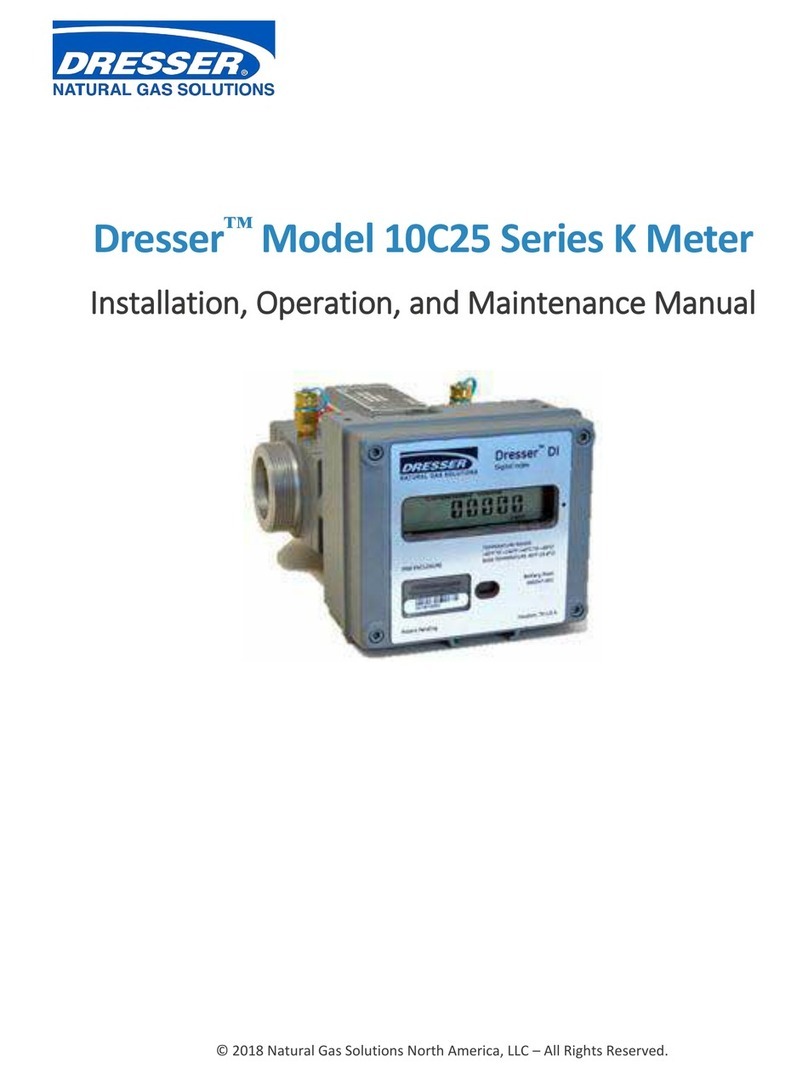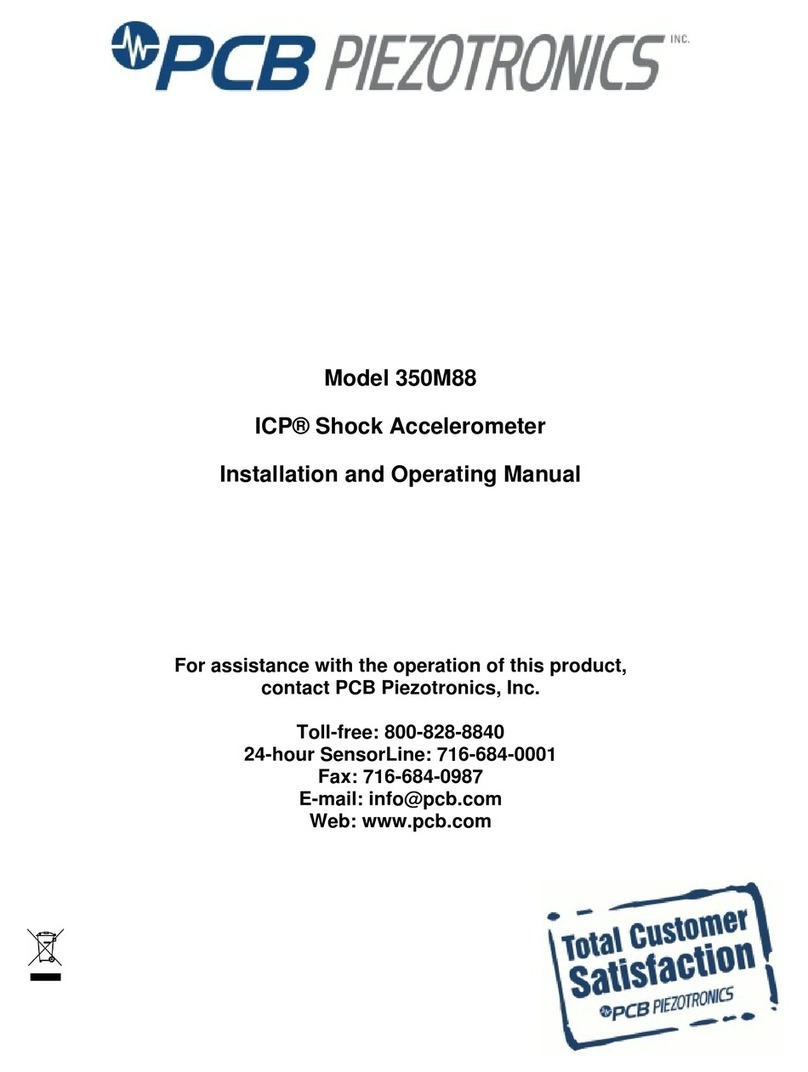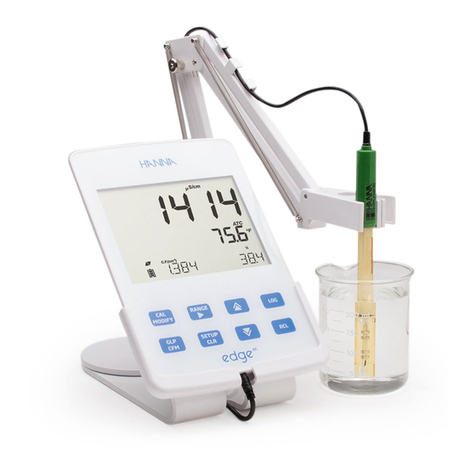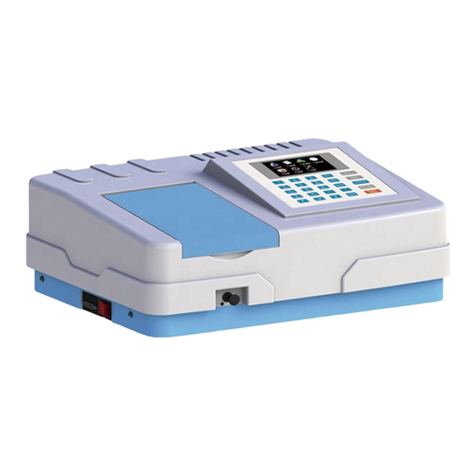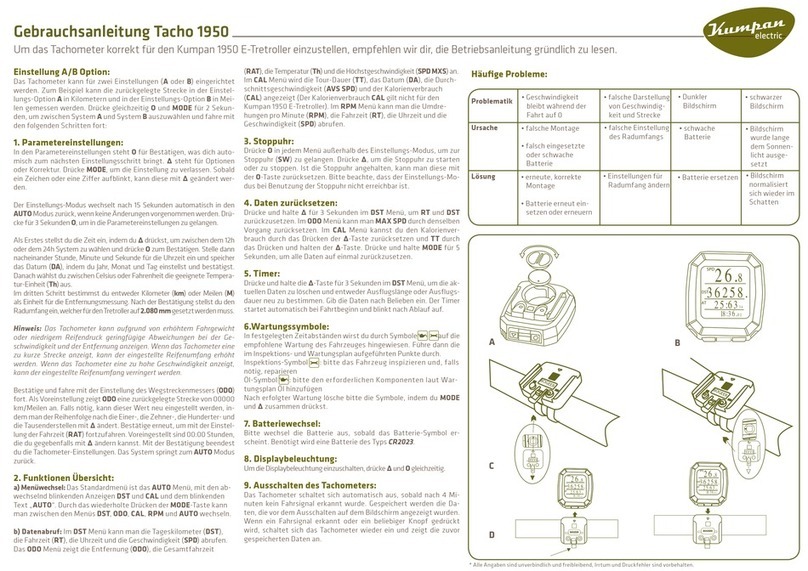SLOPE INDICATOR VW User manual

Copyright ©2006 Slope Indicator Company. All Rights Reserved.
This equipment should be installed, maintained, and operated by technically qualified personnel. Any errors
or omissions in data, or the interpretation of data, are not the responsibility of Slope Indicator Company. The
information herein is subject to change without notification.
This document contains information that is proprietary to Slope Indicator company and is subject to return
upon request. It is transmitted for the sole purpose of aiding the transaction of business between Slope Indi-
cator Company and the recipient. All information, data, designs, and drawings contained herein are propri-
etary to and the property of Slope Indicator Company, and may not be reproduced or copied in any form, by
photocopy or any other means, including disclosure to outside parties, directly or indirectly, without permis-
sion in writing from Slope Indicator Company.
SLOPE INDICATOR
12123 Harbour Reach Drive
Mukilteo, Washington, USA, 98275
Tel: 425-493-6200 Fax: 425-493-6250
E-mail: [email protected]
Website: www.slopeindicator.com
VW Jointmeter
52632289

VW Jointmeter, 2006/6/15
Contents
Introduction. . . . . . . . . . . . . . . . . . . . . . . . 1
Installation . . . . . . . . . . . . . . . . . . . . . . . . . 2
Taking Readings . . . . . . . . . . . . . . . . . . . . 8
Data Reduction. . . . . . . . . . . . . . . . . . . .10

VW Jointmeter, 2006/6/15 1
Introduction
Applications The VW Jointmeter is used to monitor movement at joints and
cracks in concrete structures.
Basic Configuration The jointmeter consists of one or more VW displacement
sensors, brackets, and anchors. The drawing below shows a 3-D
Jointmeter. Note that the exact configuration of the brackets will
vary according to the needs at the site:
Anchor
X-axis
Z-axis
Y-axis
VW displacement sensor

VW Jointmeter, 2006/6/15 2
Installation
Overview The drawing below shows the completed installation.The basic
steps for installation are as follows:
1. Choose location. Mark location of anchors holes using Z
bracket and XY template as guide.
2. Drill anchor holes. For each bracket, it may be useful to drill
one hole first, temporarily attach the bracket, and use holes in
the bracket to place other holes.
3. Insert anchors into holes.
4. Attach Z-sensor to anchor, slide Z bracket over the sensor,
and attach the bracket to its anchors.
5. Attach X and Y brackets to their anchors.
6. Install X and Y sensors.
7. Adjust all sensors to starting position.
Z Bracket
Y Bracket
X Bracket

VW Jointmeter, 2006/6/15 3
Choose Location 1. Choose the location for the jointmeter.
2. Measure 325 mm (12.75 inches) from surface A.
3. Mark location for Z anchor on surface B
Place XY Template 1. Assemble template.
2. Center hub on Z anchor.
3. Place Y leg of template parallel to joint.
AB
Location for Z anchor
is 325 mm or 12.75 inches
from surface A
Template hub centered
on Z anchor location
Y leg of template
parallel with joint

VW Jointmeter, 2006/6/15 4
Mark Locations
for Anchor Holes
1. Check that hub is centered on Z anchor location.
2. Place plate of Z bracket against surface A. Rest bracket on
template hub. Mark anchor locations. Remove Z bracket.
3. Mark locations for X and Y anchors using corners of each leg.
Drill Anchor Holes For each bracket, it may be useful to drill one hole first, insert
the anchor, temporarily attach the bracket, and then use remain-
ing holes in the bracket to place other holes.
A
Z Bracket
Location for Y anchors
Location for X anchors
Holes in plate
show location for
Z anchors

VW Jointmeter, 2006/6/15 5
Install Anchors Anchors may be either groutable or expansion type anchors..
Install Z sensor
and bracket
1. Look at the next page also. It will help you plan your steps.
2. Connect Z sensor to Z anchor. Take care that you turn only
the connecting nut. Do not twist the sensor or the cable.
3. Insert Z sensor’s leader rod through top of Z bracket. Then
slide Z bracket over sensor and onto anchors on surface A.
Leader rod is later
removed.
B

VW Jointmeter, 2006/6/15 6
Adjust Z Sensor 1. Remove leader rod.
2. Pull up on bolt to adjust the starting position for sensor. Use a
readout and adjust the sensor to obtain a mid-range reading
or simply measure with a ruler.
Sensor is in zero
position and will
monitor vertical
movement in only
one direction.
Not recommended.
Sensor opened to
mid-range. It can now
monitor vertical
movement in both
directions.
This distance is equivalent to the opening of
the sensor.

VW Jointmeter, 2006/6/15 7
Install X and Y Sensors 1. Install X and Y brackets and sensors.
2. Adjust starting position of sensor. Use a readout and adjust
the sensor to obtain a mid-range reading or simply measure
with a ruler.
Sensor is in zero position and will
monitor only opening of the joint.
This is not recommended.
Sensor is now opened to mid-range. It
can monitor both opening and closing
of the joint.
The length of the exposed
rod is the range allowed for
closing of the joint in the X
axis.

VW Jointmeter, 2006/6/15 8
Taking Readings
Test Readings •You should take readings before the sensors are installed to
check that they are working properly. Use the sensor calibra-
tion sheets to convert frequency readings to units of length.
•You should also take readings immediately after sensors are
installed to check that they are still working.
Initial Readings •You should take a set of initial readings to serve as the base-
line readings. All subsequent readings will be compared to the
baseline readings, so these initial readings are especially
important.
•Note the time, temperature, weather conditions. These should
be as close to typical as possible.
•If the sensors are underwater, allow at least four hours for full
temperature equilibrium.
•If the sensors are not in water, take some measures to prevent
heating by the direct sunlight. Then, when the sensors have
cooled to the ambient air temperature, obtain the initial read-
ings.
Using Portable Readouts These instructions tell how to read Vibrating Wire (VW) sensors
with Slope Indicator’s portable readouts. Instructions for read-
ing VW sensors with a Campbell Scientific loggers can be found
in the support - technotes section of at www.slopeindicator.com.
Reading with the
VW Data Recorder
1. Connect signal cable to the data recorder:
2. Choose Hz + Thermistor.
3. Select the 1400-3500 Hz range.
4. The recorder displays sensor reading in Hz and a temperature
reading in degrees C.
Binding Posts Wire Colors
VW Orange Red
VW White & Orange Black
TEMP Blue White
TEMP White & Blue Green
SHIELD Shield Shield

VW Jointmeter, 2006/6/15 9
Reading with the
VWP Indicator
1. Connect signal cable to the VWP indicator as shown in the
table below.
2. Select the 1.4-3.50 kHz range with the Sweep key.
3. Select Hz with the Data key.
4. Read the RTD: Select °C with the Data key. Note that the
VWP Indicator cannot read thermistors.
Standard Jumper 52611950 Connect alligator clips as shown:
Clips Wire Colors Function
Red Orange Red VW
Red White & Orange Black VW
Black Blue White TEMP
Black White & Blue Green TEMP

VW Jointmeter, 2006/6/15 10
Data Reduction
Find the Calibration Factors 1. Use the sensor serial number to match the sensor with its
calibration sheet. Each sensor has unique calibration factors.
2. Find the A, B, and C coefficients for this sensor.
Convert Hz Readings to
Engineering Units
1. Apply the coefficients as follows:
ReadingEngineering Units = AF2+ BF + C
where F is the reading in Hz.
2. The resulting value is the position of the sensor shaft. Values
increase as the shaft extends. The jointmeter is typically
calibrated in mm. If you require inches, divide the mm value
by 25.4.
Calculate Changes Subtract the initial value from the current value. This is move-
ment. Positive values indicate opening of the joint. Negative val-
ues indicate closing of the joint.
Temperature We recommend that you record temperature. Temperature data
can help you understand movement due to temperature
changes. Currently, we do not apply a temperature correction to
jointmeter readings.
This manual suits for next models
1
Table of contents
Other SLOPE INDICATOR Measuring Instrument manuals

